Yaseen & Party 60’s taarab compilation from Yaseen Mohamed Afro7

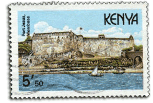
![]() ‘Harambe’ by Mac & Party was one of the most interesting recent rediscoveries of Kenyan taarab from the past decades. An English language taarab song with the prominent presence of an early synthesizer, it sounded unlike any other Kenyan music that came out during the 1960s and ‘70s. Initially, when trying to license the track for reissue in 2016 (Soundway’s ‘Kenya Special volume 2’ and the 45 RPM reissue on Afro7), we didn’t have much luck in finding out who had recorded and composed the song, or even when exactly it had come out. Comparing discographies of the original label, and
‘Harambe’ by Mac & Party was one of the most interesting recent rediscoveries of Kenyan taarab from the past decades. An English language taarab song with the prominent presence of an early synthesizer, it sounded unlike any other Kenyan music that came out during the 1960s and ‘70s. Initially, when trying to license the track for reissue in 2016 (Soundway’s ‘Kenya Special volume 2’ and the 45 RPM reissue on Afro7), we didn’t have much luck in finding out who had recorded and composed the song, or even when exactly it had come out. Comparing discographies of the original label, and 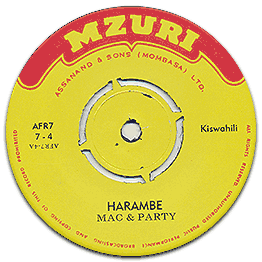
![]() listening to other songs that were close enough by catalogue numbers, it appeared to be the work of the late singer/composer Yaseen Mohamed. His sons were able to confirm that it was their father singing on those singles, that Mac & Party and Yaseen & Party were most likely the same band, and that the recordings were done in the early ‘60s.
listening to other songs that were close enough by catalogue numbers, it appeared to be the work of the late singer/composer Yaseen Mohamed. His sons were able to confirm that it was their father singing on those singles, that Mac & Party and Yaseen & Party were most likely the same band, and that the recordings were done in the early ‘60s.
A closer look at Yaseen Mohamed’s legacy reveals that he was an important figure in Kenya’s taarab music of the 20th century. Between his first 78 RPM record, which came out around 1947, and the last single released in the mid-sixties, his discography spans nearly 50 confirmed releases, and possibly many more collaborations that he was not credited for.
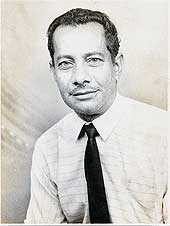 Yaseen was born in Mombasa in the 1920s. His parents were of Omani heritage. Growing up he joined the British colonial army, which allowed him to travel around the region and soak up a wide variety of cultural influences. During Yaseen’s youth, recorded taarab music had become popular across the region, pioneered by a group of musicians from Zanzibar whose musical output from the late ’20s and early ’30s set a trend.
Yaseen was born in Mombasa in the 1920s. His parents were of Omani heritage. Growing up he joined the British colonial army, which allowed him to travel around the region and soak up a wide variety of cultural influences. During Yaseen’s youth, recorded taarab music had become popular across the region, pioneered by a group of musicians from Zanzibar whose musical output from the late ’20s and early ’30s set a trend.
Socio-economic changes in the colony during the 20th century, which transformed Mombasa from a Swahili town of less than 30,000 people, reigned by the sultan of Zanzibar, into a metropole in the newly independent country of Kenya, had a major impact on music culture. These changes were mirrored in the evolution of taarab between the 1920s and ‘60s. Yaseen’s early work is a patchwork of stylistic influences from Indian and Egyptian film melodies, Cuban son, and trendy dance styles such as the twist, mambo and samba, all thrown in the mix with a traditional taarab combo line-up of vocals, ud and percussion. He would later be quoted as saying that “there is no certain thing which is taarab. Even rock is taarab if people just sit and listen”.

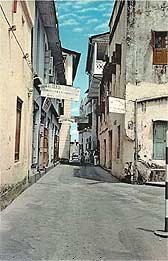 By the early ‘50s, Yaseen had joined Assanand & Sons (Mombasa) Ltd., a shop selling musical instruments and 78 RPM records, which was quickly being developed into Mombasa’s most popular music studio. Yaseen was an all-round member on the team, recording his own music, performing as a session musician, acting as a studio technician, and scouting new talent for Mzuri, the in-house label. Apart from singing and composing he became a master of the taishokoto, a musical instrument of Japanese origin which was introduced in Kenya in the 1940s. During this time he started recording with his wife Saada (credited on releases as ‘Mimi’), who joined him on the stage during live
By the early ‘50s, Yaseen had joined Assanand & Sons (Mombasa) Ltd., a shop selling musical instruments and 78 RPM records, which was quickly being developed into Mombasa’s most popular music studio. Yaseen was an all-round member on the team, recording his own music, performing as a session musician, acting as a studio technician, and scouting new talent for Mzuri, the in-house label. Apart from singing and composing he became a master of the taishokoto, a musical instrument of Japanese origin which was introduced in Kenya in the 1940s. During this time he started recording with his wife Saada (credited on releases as ‘Mimi’), who joined him on the stage during live  single mic set up in the storage room at the back of the Assanand shop.
single mic set up in the storage room at the back of the Assanand shop.
Yaseen, Mimi and their band were at the forefront of innovation in Mombasa taarab; their small-band approach with newly introduced instruments such as the (amplified) taishokoto, accordion, and the Clavioline, a predecessor of the synthesizer, sounded quite different from the big-band taarab approach of orchestras that were around during the 1940s and ‘50s. Their short songs (limited to 3 minutes per side for 78 RPM releases, and a bit longer when Mzuri started pressing on 45 RPM singles) appeared easy on the ear, but the lyrics were rooted in the intricate Swahili poetry that had been popular among the East African coast for centuries.
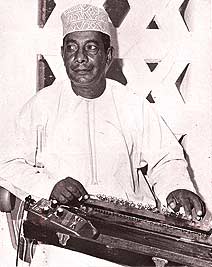 In 1962, Yaseen and Mimi got their first child, a milestone described in ‘Nimepata mwana’. From then on, Yaseen focused on working regular jobs, while music remained a hobby. They struggled to make ends meet though, living with their four children in a single-room apartment in Mombasa’s inner city. While Yaseen was of Omani heritage, Mimi’s parents were Digo, a people from coastal Kenya who were discriminated against during the colonial era. Yaseen’s close family didn’t accept Mimi and her kids into the family. In 1972, Yaseen left Mimi and the children to take up work in Oman, which had just started a transition from one of the middle east’s most traditional societies into a modern Arab oil-fuelled economy. Yaseen’s professional skills as an electrician and a mechanic were welcomed as he joined thousands from the Omani diaspora in East Africa in occupying the work force. Despite continuing to make music in his pastime, performing on national television and radio with his taishokoto, and composing a song for sultan Qaboos, he didn’t record any more music. Yaseen returned to Mombasa to visit his wife and sons every few years, and he intended to retire bring the family over to Oman, but he passed away in 1985. By that time, the Mzuri label and Assanand shop were long gone, and the production of taarab in Kenya had started a decline that has nearly decimated the Mombasa scene by 2019. A few of Yaseen’s songs were featured on foreign compilations, some of his recordings can be found on bootleg CDs in Mombasa, but only some of the older generation
In 1962, Yaseen and Mimi got their first child, a milestone described in ‘Nimepata mwana’. From then on, Yaseen focused on working regular jobs, while music remained a hobby. They struggled to make ends meet though, living with their four children in a single-room apartment in Mombasa’s inner city. While Yaseen was of Omani heritage, Mimi’s parents were Digo, a people from coastal Kenya who were discriminated against during the colonial era. Yaseen’s close family didn’t accept Mimi and her kids into the family. In 1972, Yaseen left Mimi and the children to take up work in Oman, which had just started a transition from one of the middle east’s most traditional societies into a modern Arab oil-fuelled economy. Yaseen’s professional skills as an electrician and a mechanic were welcomed as he joined thousands from the Omani diaspora in East Africa in occupying the work force. Despite continuing to make music in his pastime, performing on national television and radio with his taishokoto, and composing a song for sultan Qaboos, he didn’t record any more music. Yaseen returned to Mombasa to visit his wife and sons every few years, and he intended to retire bring the family over to Oman, but he passed away in 1985. By that time, the Mzuri label and Assanand shop were long gone, and the production of taarab in Kenya had started a decline that has nearly decimated the Mombasa scene by 2019. A few of Yaseen’s songs were featured on foreign compilations, some of his recordings can be found on bootleg CDs in Mombasa, but only some of the older generation 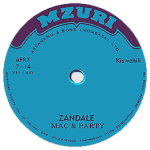
![]() in Kenya are aware of the remarkable legacy and the impact that Yaseen and his wife have had on Kenya’s coastal music.
in Kenya are aware of the remarkable legacy and the impact that Yaseen and his wife have had on Kenya’s coastal music.
The full album LP with 4-page fold-out insert with extended liner notes and the single can be bought seperate through our music shop, with reasonable worldwide shipping prices, use this link to buy directly from us, we also have other Afro7 releases available.
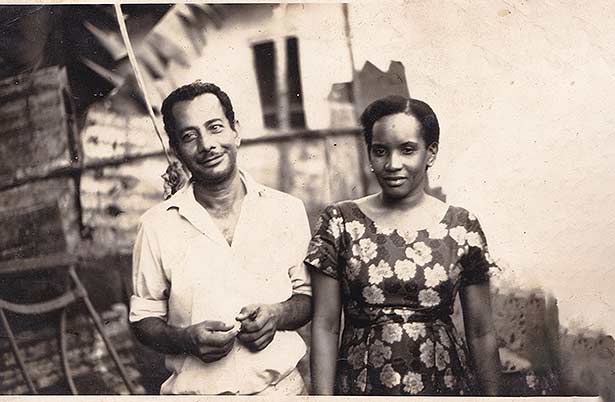
|
LINK TO SONG SNIPPETS from the Single Mac & Party Zandale and Kiss to Kiss single |
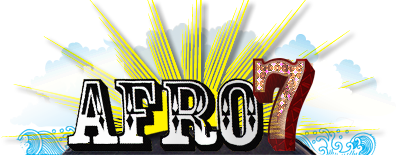
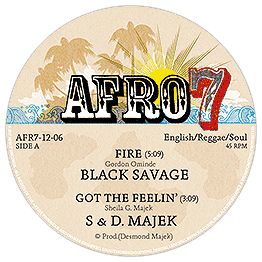
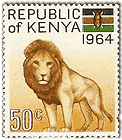
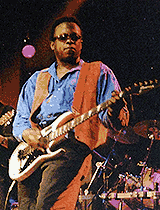 Let me tell you about this one: the label these songs originally came out on was
Let me tell you about this one: the label these songs originally came out on was 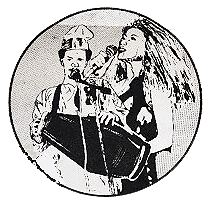 In the early years of CBS Kenya, before the ‘Fire’ single was released, Nigerian Desmond Majekodunmi was at the production helm running the CBS recording facilities. His Nigerian/American wife Sheila was a profiled singer in Nairobi at the time and the couple had several recording dates in Kenya. We’ve picked one that has a slightly quirky disco backing, but with the great voice of Sheila Majekodunmi in front. Read the full story of the Majeks
In the early years of CBS Kenya, before the ‘Fire’ single was released, Nigerian Desmond Majekodunmi was at the production helm running the CBS recording facilities. His Nigerian/American wife Sheila was a profiled singer in Nairobi at the time and the couple had several recording dates in Kenya. We’ve picked one that has a slightly quirky disco backing, but with the great voice of Sheila Majekodunmi in front. Read the full story of the Majeks 
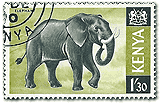
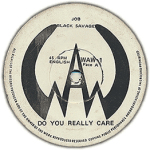 One band whose recorded output has been all but invisible until recently, but who are well remembered by people who were young in 1970s Nairobi, is Black Savage. Their music was released on an LP and three singles between the mid-70s and the early 80s, and has remained out of print ever after. The early years of the band, whose members met during their secondary school years in Nairobi, are well described in the liner notes accompanying the current reissue compilation by Afro7. Band leader Gordon was the son of professor Simeon Ominde, who had led the reform of Kenya’s educational system in 1964 upon independence, and who was teaching at Makerere University in Uganda in 1956 when his son was born. Gordon Ominde’s earliest memories included Louis Armstrong’s concert in Kampala in 1961, where – at the age of four – he was invited on stage and started conducting the band. Musical inspiration also came from his sisters who were singers, and from attending musical classes, although at Lenana – a former whites-only boarding school which was gradually being reformed to cater to Kenyans of different backgrounds – music education meant studying Beethoven and Mozart. Together with a group of younger students who shared an interest in music, including original Black Savage members Job Seda, Jack Otieno and Ali Nassir, he started practice sessions using the musical instruments that the school provided. After completing school the band decided to rejoin and pursue a career in music, despite all odds: obtaining their own instruments, finding rehearsal space and getting the approval of their families would all have been challenges in mid-seventies Kenya.
One band whose recorded output has been all but invisible until recently, but who are well remembered by people who were young in 1970s Nairobi, is Black Savage. Their music was released on an LP and three singles between the mid-70s and the early 80s, and has remained out of print ever after. The early years of the band, whose members met during their secondary school years in Nairobi, are well described in the liner notes accompanying the current reissue compilation by Afro7. Band leader Gordon was the son of professor Simeon Ominde, who had led the reform of Kenya’s educational system in 1964 upon independence, and who was teaching at Makerere University in Uganda in 1956 when his son was born. Gordon Ominde’s earliest memories included Louis Armstrong’s concert in Kampala in 1961, where – at the age of four – he was invited on stage and started conducting the band. Musical inspiration also came from his sisters who were singers, and from attending musical classes, although at Lenana – a former whites-only boarding school which was gradually being reformed to cater to Kenyans of different backgrounds – music education meant studying Beethoven and Mozart. Together with a group of younger students who shared an interest in music, including original Black Savage members Job Seda, Jack Otieno and Ali Nassir, he started practice sessions using the musical instruments that the school provided. After completing school the band decided to rejoin and pursue a career in music, despite all odds: obtaining their own instruments, finding rehearsal space and getting the approval of their families would all have been challenges in mid-seventies Kenya.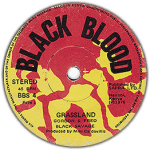 In 1973, two Kenyans of Indian heritage who had run a successful photo business since the mid-50s, gave Kenyan music a boost by investing in a 24-track recording studio, and by acquiring EMI, Pathé and other label licenses for recording and distributing local and international music. In the next few years the Sapra studio, record plant, tape duplication facility and colour printing business would become the go-to spot in Nairobi’s Industrial Area for musicians and labels from all around East Africa. The studio was built and – as the owners struggled to find a sufficiently trained local engineer – also run by Detlef Degener, a German who had come to Kenya to construct studios for training journalists. Between 1975 when Sapra studio opened and the end of 1978 when the company went bankrupt, he recorded hundreds of bands from as far as Zambia (many Zamrock albums were produced under his guidance). Black Savage also came to record at Sapra for their debut album, which was to be released by EMI.
In 1973, two Kenyans of Indian heritage who had run a successful photo business since the mid-50s, gave Kenyan music a boost by investing in a 24-track recording studio, and by acquiring EMI, Pathé and other label licenses for recording and distributing local and international music. In the next few years the Sapra studio, record plant, tape duplication facility and colour printing business would become the go-to spot in Nairobi’s Industrial Area for musicians and labels from all around East Africa. The studio was built and – as the owners struggled to find a sufficiently trained local engineer – also run by Detlef Degener, a German who had come to Kenya to construct studios for training journalists. Between 1975 when Sapra studio opened and the end of 1978 when the company went bankrupt, he recorded hundreds of bands from as far as Zambia (many Zamrock albums were produced under his guidance). Black Savage also came to record at Sapra for their debut album, which was to be released by EMI. ‘Something for someone’ provides a refreshing look at Kenya’s musical landscape of the mid-seventies. Black Savage weren’t drawing their primary influence from rumba or benga but from psych and folk rock, funk and r&b. All songs were in English, and the lyrics were politically and socially aware, breathing the activist vibe of the international ‘summer of love’ generation. The band released three more singles. ‘Do you really care/Save the savage’ is two sides of semi-acoustic protest folk, ‘Grassland/Kothbiro’ embraces the group’s Kenyan identity through the music and language, and ‘Fire/Rita’ (released around 1982 on the short-lived Kenyan CBS label) sounds as if the group attempts to reinvent itself – as a reggae band.
‘Something for someone’ provides a refreshing look at Kenya’s musical landscape of the mid-seventies. Black Savage weren’t drawing their primary influence from rumba or benga but from psych and folk rock, funk and r&b. All songs were in English, and the lyrics were politically and socially aware, breathing the activist vibe of the international ‘summer of love’ generation. The band released three more singles. ‘Do you really care/Save the savage’ is two sides of semi-acoustic protest folk, ‘Grassland/Kothbiro’ embraces the group’s Kenyan identity through the music and language, and ‘Fire/Rita’ (released around 1982 on the short-lived Kenyan CBS label) sounds as if the group attempts to reinvent itself – as a reggae band. Jack Otieno (today known as Jack Odongo) joined the African Heritage Band. Job then became an actor (Out of Africa), joined the UK record label Real World and scored Hollywood soundtracks. Jack went on to produce numerous Kenyan bands throughout the 1980s and 90s, and is still active as a gospel musician. Gordon Ominde continued his studies but ultimately chose for a career as a musician, and his music took him to England and to Germany where he started a family; he died unexpectedly in 2000. Mbarak Achieng is credit for composing Black Savage’s Kothbiro, which Ayub Ogada re-recorded and which ended on the soundtrack of the Constant Gardener. The memory of Black Savage as Kenya’s most prolific rockers of the 1970s remains vivid in the hearts of thousands of Nairobians, and the current Afro7 reissue is a worthy first attempt at introducing their best work to an international audience.
Jack Otieno (today known as Jack Odongo) joined the African Heritage Band. Job then became an actor (Out of Africa), joined the UK record label Real World and scored Hollywood soundtracks. Jack went on to produce numerous Kenyan bands throughout the 1980s and 90s, and is still active as a gospel musician. Gordon Ominde continued his studies but ultimately chose for a career as a musician, and his music took him to England and to Germany where he started a family; he died unexpectedly in 2000. Mbarak Achieng is credit for composing Black Savage’s Kothbiro, which Ayub Ogada re-recorded and which ended on the soundtrack of the Constant Gardener. The memory of Black Savage as Kenya’s most prolific rockers of the 1970s remains vivid in the hearts of thousands of Nairobians, and the current Afro7 reissue is a worthy first attempt at introducing their best work to an international audience.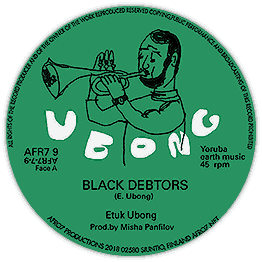

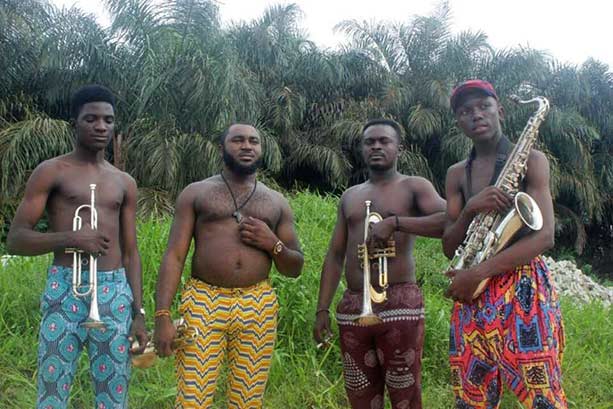
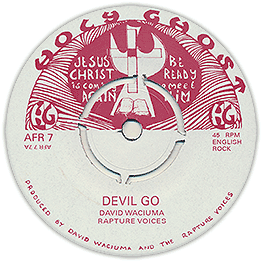

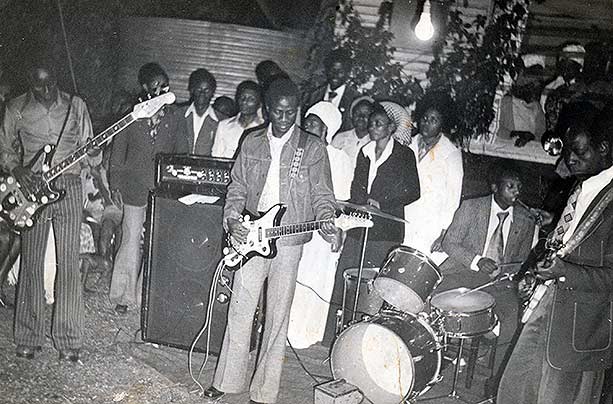

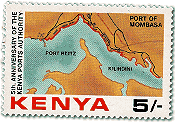
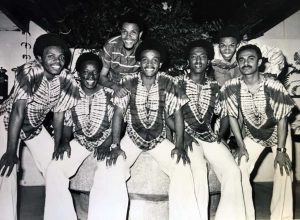

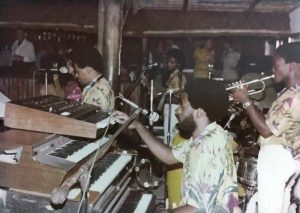
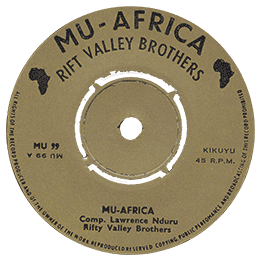
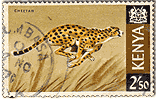 This song rekindles memories of the fiery wave of the black consciousness movement that swept across the African diaspora from 1960s through to the ’80s. The Rift Valley Brothers band’s lyrics are seemingly a clarion call imploring local Kenyans to come to terms with their rich African roots and home-grown heroes. These were likely inspired and penned in praise of Kenya’s liberation struggle and key Mau Mau frontline freedom fighters. Several unsung and long forgotten ‘bush’ generals are saluted for their sweat, gallantry and bloodshed. But the underlying message is undeniably emphatic on the pressing need (especially for the younger generation) to embrace selfconsciousness and pride in their African heritage.
This song rekindles memories of the fiery wave of the black consciousness movement that swept across the African diaspora from 1960s through to the ’80s. The Rift Valley Brothers band’s lyrics are seemingly a clarion call imploring local Kenyans to come to terms with their rich African roots and home-grown heroes. These were likely inspired and penned in praise of Kenya’s liberation struggle and key Mau Mau frontline freedom fighters. Several unsung and long forgotten ‘bush’ generals are saluted for their sweat, gallantry and bloodshed. But the underlying message is undeniably emphatic on the pressing need (especially for the younger generation) to embrace selfconsciousness and pride in their African heritage. 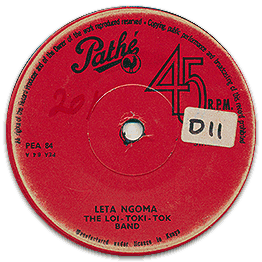
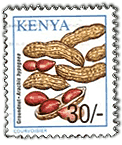 Happy summer! We are have been working hard to update the site to be more mobile friendly and will keep adding more vintage stock throughout the year! Keep coming back in!
Happy summer! We are have been working hard to update the site to be more mobile friendly and will keep adding more vintage stock throughout the year! Keep coming back in!
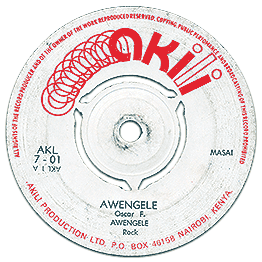
 Awengele was a self-styled ‘boy band’ comprising four members, all of Luhya origin (West Kenya). Barely out of school, they were all pursuing careers – as an engineer, civil servant, a cartoonist and marketeer – and played music in their free time, doing regular shows at schools and public events, but never on the club circuit. Inspired by the afro-rock of Osibisa as well as Santana and the Motown hits of the mid-seventies, their style was defined by the musical instruments at their disposal: guitar, bass and a drum kit. Through their manager Joe Kuria they got to record a single for the Akili label, adding an organ to the mix. Kenyan 45s typically mentioned the style of the song on the label, and their self-titled debut listed both ‘rock’ and ‘Maasai’. The latter referred to the vocal style used on the chorus, which was obviously inspired by Maasai chants, and to the song’s lyrics which were in Luhya with a few words of Maasai thrown in; the flipside was in English. Kenya in the 1970s counted a handful of other bands playing rock (never as many as Zambia or Nigeria though). These included Black Savage and Jimmy Mawi, who was an inspiration to the group as they often played together. However, Awengele’s fusion of soul, funk and psych-rock was one of a kind. This and many more great tracks from Kenyas musical golden era 1970s & ’80s are out now on Soundway’s Kenya Special:Volume II, get your copy from the
Awengele was a self-styled ‘boy band’ comprising four members, all of Luhya origin (West Kenya). Barely out of school, they were all pursuing careers – as an engineer, civil servant, a cartoonist and marketeer – and played music in their free time, doing regular shows at schools and public events, but never on the club circuit. Inspired by the afro-rock of Osibisa as well as Santana and the Motown hits of the mid-seventies, their style was defined by the musical instruments at their disposal: guitar, bass and a drum kit. Through their manager Joe Kuria they got to record a single for the Akili label, adding an organ to the mix. Kenyan 45s typically mentioned the style of the song on the label, and their self-titled debut listed both ‘rock’ and ‘Maasai’. The latter referred to the vocal style used on the chorus, which was obviously inspired by Maasai chants, and to the song’s lyrics which were in Luhya with a few words of Maasai thrown in; the flipside was in English. Kenya in the 1970s counted a handful of other bands playing rock (never as many as Zambia or Nigeria though). These included Black Savage and Jimmy Mawi, who was an inspiration to the group as they often played together. However, Awengele’s fusion of soul, funk and psych-rock was one of a kind. This and many more great tracks from Kenyas musical golden era 1970s & ’80s are out now on Soundway’s Kenya Special:Volume II, get your copy from the 
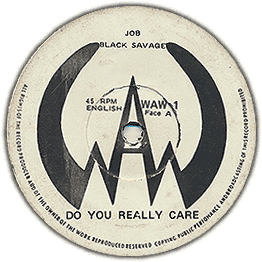
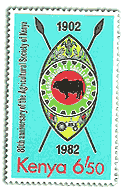 And now for something completely different! The Black Savage group, famous for the rare mid-70s EMI LP. The band line-up featured one prominent member; Job Seda, better known as Ayub Ogada (later released an album on Peter Gabriels Real World label) In a Pink Floyd-esque landscape these two tracks are oddball and unique enough to go unnoticed. Completely without any noticeable local rootings, except the lyrics. There is an uncanny quality over them and both songs complete with anti-hunting lyrics “Save the Savage, don’t shoot ’em down, they are trying to survive, they have feelings too…You know people, I think it’s very strange. How would you feel if someone was wearing your skin, or wrapping it around their feet, have you ever stopped to think, that all these animals all over the world, you know they have feelings too, bet you never thought of that, there you go shooting them down hanging them up on your wall to hide the cracks!”. Thanks to Jumanne Thomas for finding the tunes!
And now for something completely different! The Black Savage group, famous for the rare mid-70s EMI LP. The band line-up featured one prominent member; Job Seda, better known as Ayub Ogada (later released an album on Peter Gabriels Real World label) In a Pink Floyd-esque landscape these two tracks are oddball and unique enough to go unnoticed. Completely without any noticeable local rootings, except the lyrics. There is an uncanny quality over them and both songs complete with anti-hunting lyrics “Save the Savage, don’t shoot ’em down, they are trying to survive, they have feelings too…You know people, I think it’s very strange. How would you feel if someone was wearing your skin, or wrapping it around their feet, have you ever stopped to think, that all these animals all over the world, you know they have feelings too, bet you never thought of that, there you go shooting them down hanging them up on your wall to hide the cracks!”. Thanks to Jumanne Thomas for finding the tunes!
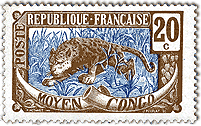 Le Nzoi aka The Bees originated sometimes in the early seventies assembled by the famous vocalist Edo Gang, who’s been in bands like Les Bantous De La Capitale and T.P.O.K. Jazz. The Edition Populaire was a label owned by Franco, and this gem of a tune ‘Declaration’ was recorded on a mobile recording studio Franco used for all his sub-labels. Never discard a Congolese track after the first minute, it starts cooking mid-way. The Bees start to sting real hard here at 1:45! Departing from a call and response duet a killer guitar riff kics in and meets the sax solo half-way. This track can be looped throughout the day and night, it has everything you need!
Le Nzoi aka The Bees originated sometimes in the early seventies assembled by the famous vocalist Edo Gang, who’s been in bands like Les Bantous De La Capitale and T.P.O.K. Jazz. The Edition Populaire was a label owned by Franco, and this gem of a tune ‘Declaration’ was recorded on a mobile recording studio Franco used for all his sub-labels. Never discard a Congolese track after the first minute, it starts cooking mid-way. The Bees start to sting real hard here at 1:45! Departing from a call and response duet a killer guitar riff kics in and meets the sax solo half-way. This track can be looped throughout the day and night, it has everything you need!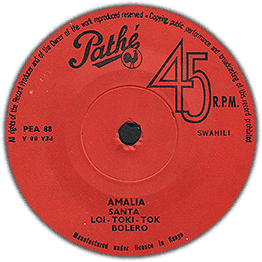
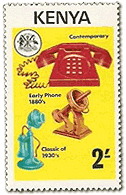 Love songs, irrespective of lyrical inspiration or language used – are endearing and captivating. They always have a way that connects to audiences with consummate ease. The song Amalia is no exception, despite its seemingly economical use of verses, astutely weaved around four simple lines that ooze with passion. Undeniably, the song-writer must have been deeply smitten and enamored by his feelings for Amalia. She is lyrically described as being “..ua langu la maisha ya dunia…” [the flower in his life on earth]. His heart yearns intensely for her charm, and love to shine through the darkness of a lifetime without her presence. The song’s laid-back and mellow refrain did likely serenade countless couples on the dance-floor, drawing lovebirds closer in tight embrace, each enveloped in the idyllic moment. Witty words like bolero [means slow-tempo] engraved on the 45rpm sleeve, were used to categorize specific tracks. Anyone with a keen ear for good music is bound to appreciate song’s adeptly structured guitar-work and rhythmic interplay, crafted during what was a possibly riveting recording session. On the flip side, Lakusema Mimi Sina – loosely translates in English as having nothing to say, steps up the tempo a notch higher but lyrics maintain the quest-for-love theme. Notably, either track bears less or minimal foreign influences – a tactful departure from the commonplace feature for most bands of the era. There is hardly any pronounced James Brown overtones on the trend-setting
Love songs, irrespective of lyrical inspiration or language used – are endearing and captivating. They always have a way that connects to audiences with consummate ease. The song Amalia is no exception, despite its seemingly economical use of verses, astutely weaved around four simple lines that ooze with passion. Undeniably, the song-writer must have been deeply smitten and enamored by his feelings for Amalia. She is lyrically described as being “..ua langu la maisha ya dunia…” [the flower in his life on earth]. His heart yearns intensely for her charm, and love to shine through the darkness of a lifetime without her presence. The song’s laid-back and mellow refrain did likely serenade countless couples on the dance-floor, drawing lovebirds closer in tight embrace, each enveloped in the idyllic moment. Witty words like bolero [means slow-tempo] engraved on the 45rpm sleeve, were used to categorize specific tracks. Anyone with a keen ear for good music is bound to appreciate song’s adeptly structured guitar-work and rhythmic interplay, crafted during what was a possibly riveting recording session. On the flip side, Lakusema Mimi Sina – loosely translates in English as having nothing to say, steps up the tempo a notch higher but lyrics maintain the quest-for-love theme. Notably, either track bears less or minimal foreign influences – a tactful departure from the commonplace feature for most bands of the era. There is hardly any pronounced James Brown overtones on the trend-setting 
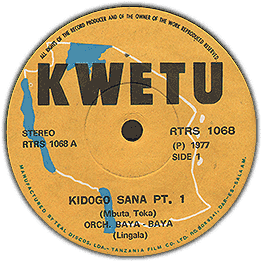
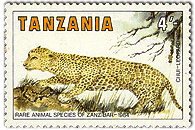 In times of “Feelabration” here at Afro7, we’ve tried to trace the Afrobeat sound in the East and Central Africa. Are there any musicians from Kenya, Tanzania or Congo that can match the prowess and sound of Nigerias Fela Kuti and his counterparts? The closest we come to trace this sound is Johnny Bokelo’s
In times of “Feelabration” here at Afro7, we’ve tried to trace the Afrobeat sound in the East and Central Africa. Are there any musicians from Kenya, Tanzania or Congo that can match the prowess and sound of Nigerias Fela Kuti and his counterparts? The closest we come to trace this sound is Johnny Bokelo’s 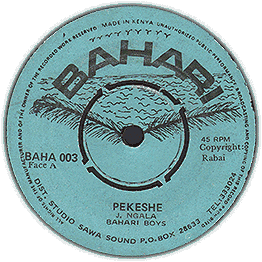
 Mangale is no doubt one of veteran saxophonist Joseph Ngala’s hit songs. It’s simple yet intricately cascading horns section and heady bassline irresistibly grows on the listener – often luring one unwittingly to the dance floor. With its catchy lyrics sung in the indigenous coastal Rabai dialect, this song is still as fresh to the ears as it was when originally composed over three decades ago during the mid 1970s. Alongside this Bahari imprint 45 inch flip side track Pekeshe – the twin traditional ‘ballads’ are timeless and enduring – easily resonating with cross-generational audiences. But notably, Mangale must have irrefutably been a somewhat melancholic, yet happy party song as its jazzy-riffs driven refrain attests – wherein the seasoned lead vocalist calls out the names of Bahari Boys Band members – Lubwe, Washo, Ndangu, Mutunga, Chiranzi, Ngala, Funzi and Kondo. This camaraderie trait was common among most closely-knit local bands hailing from the 70s era – with each instrumentalist regularly looking up to rest of crew as a source of inspiration. Pekeshe on the other hand still reigns supreme as a popular request song especially during communal events and cultural festivals held seasonally among the Miji-Kenda – nine tribes’ resident along the coastal strip. But more significantly, these now rare 45s double tracks stand out among veteran Ngala’s handful seminal recordings – traced back to an era widely referred to as the golden age of Kenyan music.
Mangale is no doubt one of veteran saxophonist Joseph Ngala’s hit songs. It’s simple yet intricately cascading horns section and heady bassline irresistibly grows on the listener – often luring one unwittingly to the dance floor. With its catchy lyrics sung in the indigenous coastal Rabai dialect, this song is still as fresh to the ears as it was when originally composed over three decades ago during the mid 1970s. Alongside this Bahari imprint 45 inch flip side track Pekeshe – the twin traditional ‘ballads’ are timeless and enduring – easily resonating with cross-generational audiences. But notably, Mangale must have irrefutably been a somewhat melancholic, yet happy party song as its jazzy-riffs driven refrain attests – wherein the seasoned lead vocalist calls out the names of Bahari Boys Band members – Lubwe, Washo, Ndangu, Mutunga, Chiranzi, Ngala, Funzi and Kondo. This camaraderie trait was common among most closely-knit local bands hailing from the 70s era – with each instrumentalist regularly looking up to rest of crew as a source of inspiration. Pekeshe on the other hand still reigns supreme as a popular request song especially during communal events and cultural festivals held seasonally among the Miji-Kenda – nine tribes’ resident along the coastal strip. But more significantly, these now rare 45s double tracks stand out among veteran Ngala’s handful seminal recordings – traced back to an era widely referred to as the golden age of Kenyan music.
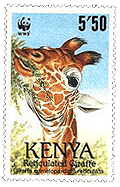 Kenya is renowned for its cross-breed of benga and rhumba rhythms. But listening to What Is It [That You Want] and My Everything – cut circa 1978 – these double-sided 45inch single tracks seem somewhat misplaced categorized as ‘Kenyan’ songs. That the funky and indisputably bouncy, disco pop-groove recordings were pressed in Nairobi during late 1970s, is a glaring pointer to the regional showbiz capital being a bedrock of diverse musical influences. Foreign pop music saturated playlists on then sole national radio broadcaster – with sprinklings of local songs accorded sporadic airplay. These formative twin tracks are credited to composer Abdalla ‘Dala’ Hamisi – who had just joined Mombasa Roots band alongside Ahmed ‘Emil’ Juma [both formerly affiliated to defunct Mombasa Vikings] and Tamrat Kabede [drums]. The group is arguably among most consistent bands plying their musical trade along Kenya’s Coastal strip. Their informal gigs began way back during mid 70s and one can still encounter the ‘Roots’ engaged in regular or private performances on evenings or weekends, often serving up covers and original cuts. The group prides itself as “.. a live and dancing band for all occasions..” Much like other musical outfits from the coast, the band formed in 1977, started out as a family affair. Its original line–up comprised the ‘Juma Brothers’ – Saeed [manager], Suleiman [keyboards], Ebrahim [guitarist] and then Ahmed ‘Emil’ [sax/vocals/guitar], who came on board later on.
Kenya is renowned for its cross-breed of benga and rhumba rhythms. But listening to What Is It [That You Want] and My Everything – cut circa 1978 – these double-sided 45inch single tracks seem somewhat misplaced categorized as ‘Kenyan’ songs. That the funky and indisputably bouncy, disco pop-groove recordings were pressed in Nairobi during late 1970s, is a glaring pointer to the regional showbiz capital being a bedrock of diverse musical influences. Foreign pop music saturated playlists on then sole national radio broadcaster – with sprinklings of local songs accorded sporadic airplay. These formative twin tracks are credited to composer Abdalla ‘Dala’ Hamisi – who had just joined Mombasa Roots band alongside Ahmed ‘Emil’ Juma [both formerly affiliated to defunct Mombasa Vikings] and Tamrat Kabede [drums]. The group is arguably among most consistent bands plying their musical trade along Kenya’s Coastal strip. Their informal gigs began way back during mid 70s and one can still encounter the ‘Roots’ engaged in regular or private performances on evenings or weekends, often serving up covers and original cuts. The group prides itself as “.. a live and dancing band for all occasions..” Much like other musical outfits from the coast, the band formed in 1977, started out as a family affair. Its original line–up comprised the ‘Juma Brothers’ – Saeed [manager], Suleiman [keyboards], Ebrahim [guitarist] and then Ahmed ‘Emil’ [sax/vocals/guitar], who came on board later on.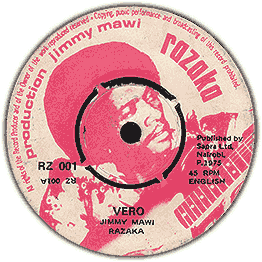
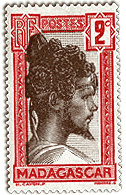 As early as 1950s, electric guitars were a phenomenon in the Madagascar islands. In subsequent years, it was typical for lead guitarists to layer their strumming with dazzling riffs on a song hurtling along a frantic pace. This could have been the basis which likely influenced the late Jimmy Mawi’s style, long before he packed his bags destined for the Kenyan capital where he pitched tent in the mid 70s. Unwittingly, he was just coming ‘back home’ as at some point – Madagascar supposedly opted to break away from East Africa’s fold. More significantly, the islands have on instances been described as the country “..where old rock albums go to die..” This uncanny aphorism perhaps resonates with the groove that infuses hard-to-find, rare – until recently, handful tracks credited to Mawi. The not-so-popular Madagascan guitarist virtuoso’s insistent dance-frenzied, Afro-funk singles
As early as 1950s, electric guitars were a phenomenon in the Madagascar islands. In subsequent years, it was typical for lead guitarists to layer their strumming with dazzling riffs on a song hurtling along a frantic pace. This could have been the basis which likely influenced the late Jimmy Mawi’s style, long before he packed his bags destined for the Kenyan capital where he pitched tent in the mid 70s. Unwittingly, he was just coming ‘back home’ as at some point – Madagascar supposedly opted to break away from East Africa’s fold. More significantly, the islands have on instances been described as the country “..where old rock albums go to die..” This uncanny aphorism perhaps resonates with the groove that infuses hard-to-find, rare – until recently, handful tracks credited to Mawi. The not-so-popular Madagascan guitarist virtuoso’s insistent dance-frenzied, Afro-funk singles 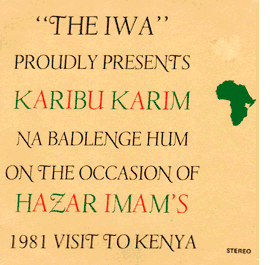
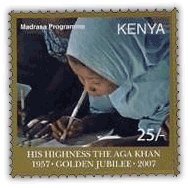 Hazar Imam or
Hazar Imam or 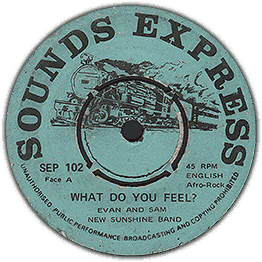
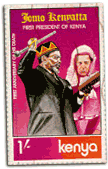 Announcement from the SOUNDS EXPRESS label! Straight from the hot press! Ladies and Gentlemen it’s the NEW SUNSHINE BAND! The second single from the band that has been creating FUZZ around your door, keeping the elders awake and the youngsters dancing their feet! Don’t miss out on the fun it’s the hottest sounds around! Evan and Sam at their catchy best! You don’t believe it? BELIEVE ME, BELIEVE IT! For distribution and commercial inquiries visit Waceke Nganga Music Store River Road, Nairobi.
Announcement from the SOUNDS EXPRESS label! Straight from the hot press! Ladies and Gentlemen it’s the NEW SUNSHINE BAND! The second single from the band that has been creating FUZZ around your door, keeping the elders awake and the youngsters dancing their feet! Don’t miss out on the fun it’s the hottest sounds around! Evan and Sam at their catchy best! You don’t believe it? BELIEVE ME, BELIEVE IT! For distribution and commercial inquiries visit Waceke Nganga Music Store River Road, Nairobi.
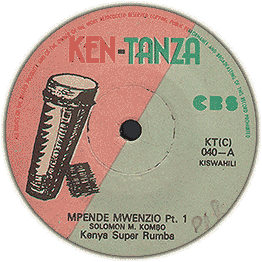
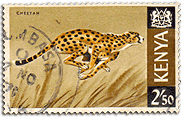 We’ve been digging through the Ken-Tanza label,
We’ve been digging through the Ken-Tanza label,
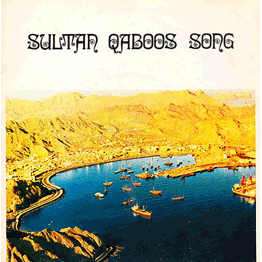
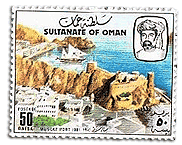 Kenyan singer
Kenyan singer 
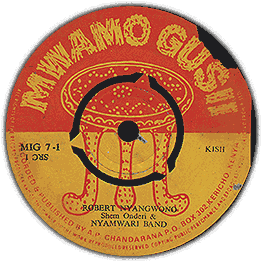
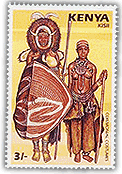 AbaGusii or more common Kisii people are a tribe located on the western parts of Kenya near Lake Victoria. This single showcases straight from the roots benga in luo tradition, bouncy tempo with drive and the guitarist shifting dynamics gives the track a certain cosmic appeal. The release also goes into
AbaGusii or more common Kisii people are a tribe located on the western parts of Kenya near Lake Victoria. This single showcases straight from the roots benga in luo tradition, bouncy tempo with drive and the guitarist shifting dynamics gives the track a certain cosmic appeal. The release also goes into 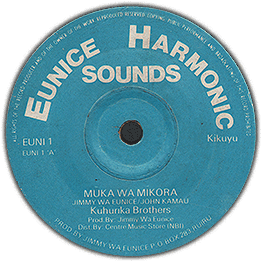
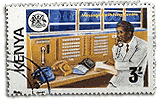 First feature of 2014 is a doublesided Kikuyu Disco burner. Private production by Jimmy Wa Eunice distributed by Centre Music store Nairobi. Steady beat with little variation, it’s the stone hard groove and the basic but very infectious melody line that sets the mark. Guitarist steps it up a notch and starts his improvisation in the last part. Turn the single around and you have another track that is just as good as the first one. If anyone have any information about the producer or the band, or the record store for that matter please leave a comment.
First feature of 2014 is a doublesided Kikuyu Disco burner. Private production by Jimmy Wa Eunice distributed by Centre Music store Nairobi. Steady beat with little variation, it’s the stone hard groove and the basic but very infectious melody line that sets the mark. Guitarist steps it up a notch and starts his improvisation in the last part. Turn the single around and you have another track that is just as good as the first one. If anyone have any information about the producer or the band, or the record store for that matter please leave a comment.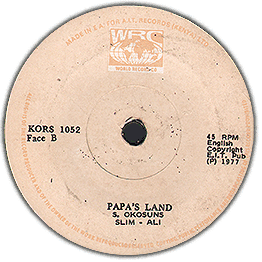
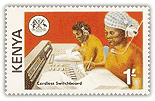 With a good dose of Reggae and Eddy Grant’s magic touch, Nigerian born Sonny Okusun had a big international hit in 79 with the political fueled ‘Fire in the Soweto’. 2 years earlier he had released
With a good dose of Reggae and Eddy Grant’s magic touch, Nigerian born Sonny Okusun had a big international hit in 79 with the political fueled ‘Fire in the Soweto’. 2 years earlier he had released 


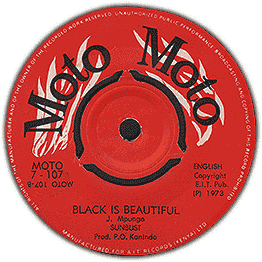
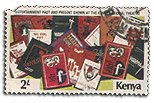 MOTO MOTO
MOTO MOTO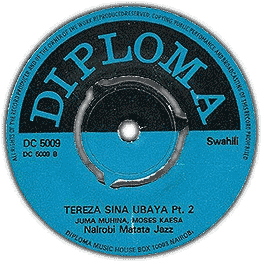
 A personal favorite from the mighty Nairobi Matata Jazz catalogue that truly showcase how tight they where back in the days. This Swahili number pretty much has it all for me, a bouncy bassline, superb breakdowns, fierce guitarlines plus a razor sharp rhythm section to match.
A personal favorite from the mighty Nairobi Matata Jazz catalogue that truly showcase how tight they where back in the days. This Swahili number pretty much has it all for me, a bouncy bassline, superb breakdowns, fierce guitarlines plus a razor sharp rhythm section to match. 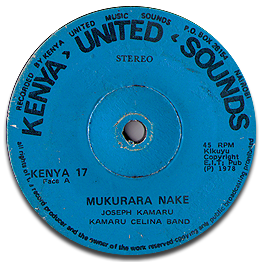
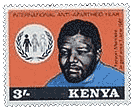
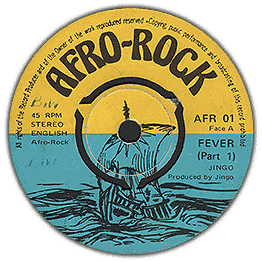
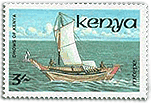 In all its splendor here is the original Kenyan ‘AFRO-ROCK’ label pressing from the mid-seventies. Let’s follow the lifespan of this song: 1977 –
In all its splendor here is the original Kenyan ‘AFRO-ROCK’ label pressing from the mid-seventies. Let’s follow the lifespan of this song: 1977 – 
 There is something very appealing about these early Ethiopian Philips singles. Especially with the picture sleeve. They often come with a very high price tag, if it’s in the right condition. Musically a league of it’s own. This monster of a doublesider showcases
There is something very appealing about these early Ethiopian Philips singles. Especially with the picture sleeve. They often come with a very high price tag, if it’s in the right condition. Musically a league of it’s own. This monster of a doublesider showcases 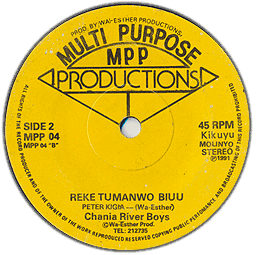
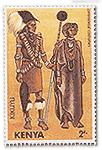 In the exciting evolution of Benga the Kikuyu artists implemented a fast paced rhythm, duo vocal harmony with several layers of guitar comp, melody and a minimalstic steady bumpin base/drum beat with little variation. This receipt seem to have worked as there are several Benga tunes perfected in the same style, often new incarnations of the same melody but with different vocals. Peter Kigia (Wa Ester) had a big hit with the B-side of his own privately financed MPP label. Rickard Masip made us aware that the artist is still ongoing with this
In the exciting evolution of Benga the Kikuyu artists implemented a fast paced rhythm, duo vocal harmony with several layers of guitar comp, melody and a minimalstic steady bumpin base/drum beat with little variation. This receipt seem to have worked as there are several Benga tunes perfected in the same style, often new incarnations of the same melody but with different vocals. Peter Kigia (Wa Ester) had a big hit with the B-side of his own privately financed MPP label. Rickard Masip made us aware that the artist is still ongoing with this 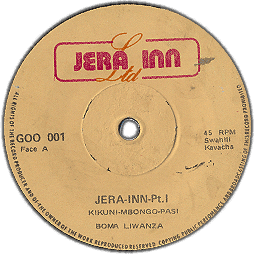
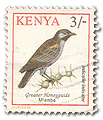
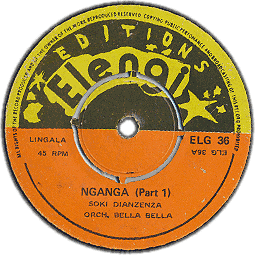
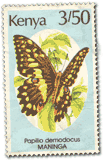
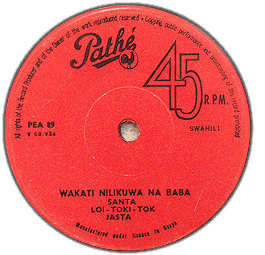
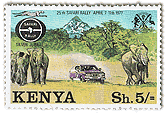 Another goodie from Santa Loi-Toki-Toki Jasta, a lovely tune with mod feeling. Check the superb organ & guitar solos. They recorded several funky pop songs such as
Another goodie from Santa Loi-Toki-Toki Jasta, a lovely tune with mod feeling. Check the superb organ & guitar solos. They recorded several funky pop songs such as 
 Probably a hit song, as this is one of the more common Ahma singles. Appears to be the Greece pressing without the
Probably a hit song, as this is one of the more common Ahma singles. Appears to be the Greece pressing without the 




 It’s late 1980. Imagine yourself sitting in a local bar downtown Harare with a cold
It’s late 1980. Imagine yourself sitting in a local bar downtown Harare with a cold 
 We haven’t found any information on the label nor the artist here, looks like a private one off. Great label design, is
We haven’t found any information on the label nor the artist here, looks like a private one off. Great label design, is 
 We have been up and down the coast of Kenya’s Swahili land scouting for records but we never came across this little 45. It was just a few years ago tropical master digger Rickard Masip turned up a copy in his own homeland of Sweden. Obviously a souvenir brought back from the
We have been up and down the coast of Kenya’s Swahili land scouting for records but we never came across this little 45. It was just a few years ago tropical master digger Rickard Masip turned up a copy in his own homeland of Sweden. Obviously a souvenir brought back from the 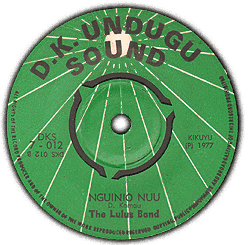
 One of many Lulu’s band singles. A prolific Kikuyu group that recorded for several labels, the groups private D.K. Undugu Sounds was run by the groups leader Daniel Kamau. Expect excellent loud pressing and tight production, simple funky aural esthetics’s as tight drumming, catchy vocals and a thousand dollar guitar riff! Perfect for the dancefloors of 2012.
One of many Lulu’s band singles. A prolific Kikuyu group that recorded for several labels, the groups private D.K. Undugu Sounds was run by the groups leader Daniel Kamau. Expect excellent loud pressing and tight production, simple funky aural esthetics’s as tight drumming, catchy vocals and a thousand dollar guitar riff! Perfect for the dancefloors of 2012.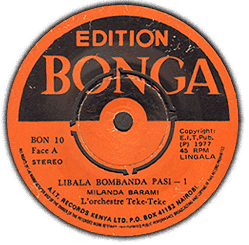

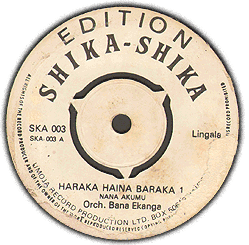




 If we got our facts straight ‘L’orchestre Masantula’ is a Tanzanian group, released on an AIT subsidiary label. ‘SAUDA’ A nice traditional track with a nice uplifting edge: driving percussive backing, guitar, sax and cool chorus. Curious about the message of the song we had to consult with our man in Nairobi, unfortunately he lost his mobile phone so we will have to wait to get the lyrics translations sorted out. Anyways we’ve merged both sides of the vinyl platter so enjoy the whole track! If you like this track we suggest you buy it, it was compiled on
If we got our facts straight ‘L’orchestre Masantula’ is a Tanzanian group, released on an AIT subsidiary label. ‘SAUDA’ A nice traditional track with a nice uplifting edge: driving percussive backing, guitar, sax and cool chorus. Curious about the message of the song we had to consult with our man in Nairobi, unfortunately he lost his mobile phone so we will have to wait to get the lyrics translations sorted out. Anyways we’ve merged both sides of the vinyl platter so enjoy the whole track! If you like this track we suggest you buy it, it was compiled on 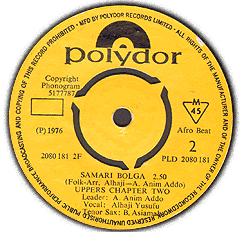
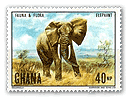 We hit the first day of 2012 with this brilliant track from The Uppers hailing from Ghana. Unfortunately we don’t have much information on them except their former band name was Uppers International and they released a couple of singles on Polydor. With a mellow groove, keys, funky drumming and a jazzy trumpet and tenor-sax solo the scarce 2.50 track-time will have you wanting more. Also we’d love to know what the lyrics are in English, post a reply if you can translate. [audio:http://afroseven.net/songs/Uppers-chapter-two-Samari-bolga.mp3|titles=Uppers chapter two – Samari bolga]
We hit the first day of 2012 with this brilliant track from The Uppers hailing from Ghana. Unfortunately we don’t have much information on them except their former band name was Uppers International and they released a couple of singles on Polydor. With a mellow groove, keys, funky drumming and a jazzy trumpet and tenor-sax solo the scarce 2.50 track-time will have you wanting more. Also we’d love to know what the lyrics are in English, post a reply if you can translate. [audio:http://afroseven.net/songs/Uppers-chapter-two-Samari-bolga.mp3|titles=Uppers chapter two – Samari bolga]
 Happy X-MAS to all our followers! Here is a track on the polygram subsidiary label Tsavo. For those of you who are familiar with the name your reference might be the Kenya national parks; Tsavo east and west. Although the name has a more dreadful meaning in Kikamba, check the facts on
Happy X-MAS to all our followers! Here is a track on the polygram subsidiary label Tsavo. For those of you who are familiar with the name your reference might be the Kenya national parks; Tsavo east and west. Although the name has a more dreadful meaning in Kikamba, check the facts on 
 Johnny Bokelo, the counterpart of Congos renowned Franco Luambo had a belt of labels and groups during the seventies and eighties. Like many other Congolese musicians he went to Kenya to finance and release his music. In this case, the song “Nakupenda Sana” is sung in Swahili, meaning again “I love you ..” A tight guitar lick, thematic horns with a neat breakdown. Somewhat reminiscent of a Manu Dibango tune. If you heard it before it was booted with a bogus name on a French 70’ties lp called
Johnny Bokelo, the counterpart of Congos renowned Franco Luambo had a belt of labels and groups during the seventies and eighties. Like many other Congolese musicians he went to Kenya to finance and release his music. In this case, the song “Nakupenda Sana” is sung in Swahili, meaning again “I love you ..” A tight guitar lick, thematic horns with a neat breakdown. Somewhat reminiscent of a Manu Dibango tune. If you heard it before it was booted with a bogus name on a French 70’ties lp called 




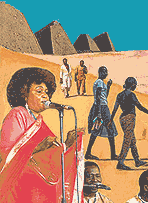
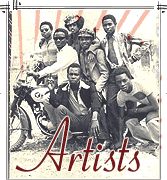














😎😎😎
A lovely song indeed...he composed a wonderful song for me too
The song is more commonly known as "Bel Ami" by Papa Noel.
very good soothing music. good rhythm and bass guitar.
Very good nostalgic music of olden times. RIP Monyoncho bwa Araka.